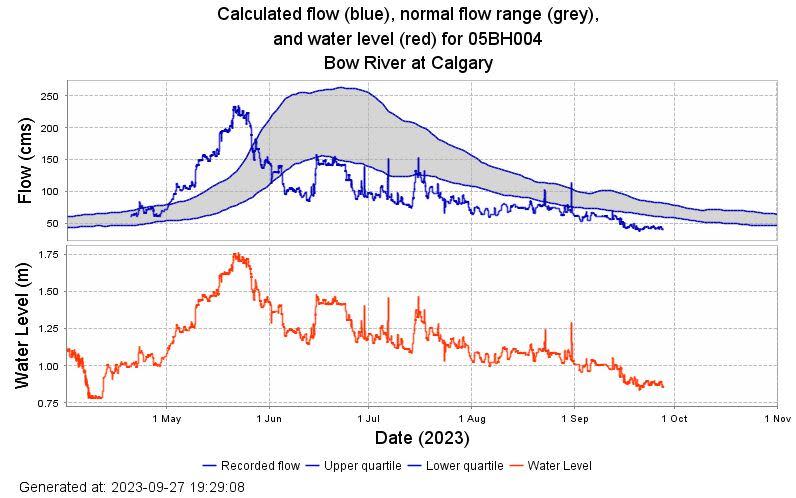Summer's over, but Calgary still has water restrictions in place. Here's why

While the outdoor watering restrictions implemented in Calgary on Aug. 15 have already saved an estimated 1.1 billion litres of water, they aren't going away any time soon, say city officials.
In order to get through what climate models are predicting to be a dry winter, the City of Calgary is planning to keep outdoor water restrictions in place for the time being, to prevent water stores from dropping too low come spring.
"The water that we have been able to save has enabled us to restore our reservoir levels and preserve them in preparation for the winter," said Nicole Newton, manager of natural environment and adaptation in the climate environment business unit at the City of Calgary.
A low snowpack in the mountains, combined with below normal rainfall and hotter than normal temperatures throughout spring and summer, have all contributed to diminished streamflows in the Bow River this year. Newton said it's the first time the city enacted its stage-one water restrictions as a result of drought.
She added that Calgarians have been quite compliant with the restrictions — no fines have been issued so far, although there have been 20 warnings for residents breaking the rules.
Newton did not give a date as to when she expects the restrictions will be lifted, but said the city's next steps will be dependent on upcoming weather, as well as residential and commercial water use habits.
"As people begin to prepare for winter, it is natural to assume that their outdoor water use would taper off, so we continue to monitor that and are using that information to guide when we might lift [restrictions]," said Newton.
"When we do decide to lift restrictions, it does not signal that we are in the clear or that we are out of drought. Regionally, we still are in a drought."
While bylaws don't allow the city to limit indoor water use, Newton said the city will encourage Calgarians to be aware of how they use water throughout the winter.
"If we don't get rainfall and the snowpack that we typically do to help restore the reservoirs [upstream] from the city, as well as the reservoirs for the irrigators downstream, then it does set next summer up to be a little bit more challenging in terms of water supply."

Recorded water levels in the Bow River this year show lower-than-average streamflows. (Alberta River Basins)
John Pomeroy is the Canada research chair of water resources and climate change at the University of Saskatchewan in Canmore. He said the low streamflows in rivers across Alberta this year are unprecedented. In Calgary, he said the Bow River is at about half its normal level.
"The summer of 2023 was the hottest in human history, certainly since the instrumental records began and possibly going back 120,000 years. So we've seen a manifestation of that," said Pomeroy.
"It's still warm in many parts of Western Canada and the seasonal forecast from Environment Canada is warmer and drier than normal … so we'll see what the winter brings."
Hotter-than-average temperatures this spring kicked off the snowmelt earlier, meaning that the streamflow in the Bow River peaked in May rather than June, when it normally does, said Pomeroy.
"It also [means] that we have essentially an extra month of summer to deal with but we don't have the extra water to get through that extra month of summer."
Pomeroy said this years' drought renews the importance of developing water management techniques that can better drought-proof the region in the future.
"The time to start is right now. We don't need to wait for a trend. Will we see a year like this again? Yeah, we probably will."
Newton said the city has identified droughts as the top climate hazard facing Calgary, and as a result is undertaking long-term mitigation planning.
She said her team is in the midst of compiling a drought resilience plan to bring to city council that will lay out goals and strategic actions based on the data they have gathered.
"It is certainly top of mind for us."


